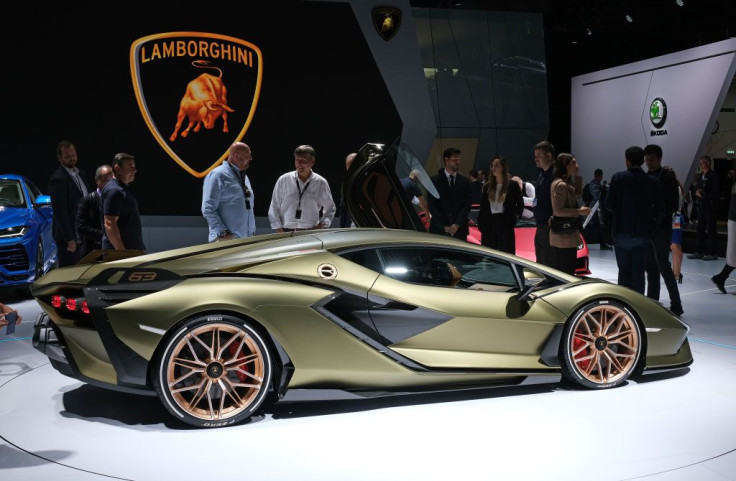Best Tesla Competitor Yet? Lamborghini Electric Car Uses Supercapacitor To Power EV
Way back in 2011, Tesla Inc. CEO Elon Musk predicted that supercapacitors -- and not batteries -- will power future electric vehicles (EVs) such as those being produced by Tesla.
“I'm a big fan of ultracapacitors,” Musk tweeted.
To this end, Musk last February announced Tesla's acquisition of Maxwell Technologies, a San Diego, California firm that makes supercapacitors (or ultracapacitors). Supercapacitors store and deliver energy much the same way a battery does but provides more power on demand and far shorter charging times. Some supercapacitors might not even require charging stations at all.
Not much has been heard of Maxwell and its supercapacitor tech since but what's not well known is Tesla has been playing catch up to Italian luxury sports car maker Automobili Lamborghini S.p.A. and the famed Massachusetts Institute of Technology (MIT). A few years ago, both partners announced a three-year project to develop a graphene-enhanced supercapacitor electric vehicle.
In simple terms, the chassis of this revolutionary vehicle will be the supercapacitor. The initial result of this collaboration was the Terzo Millennio ("Third Millennium") supercar unveiled in 2017. This concept car is a fully electric, supercapacitor-powered automobile that can be charged in minutes.
Terzo Millennio was followed by the Lamborghini Sián FKP 37, a mid-engine hybrid sports car unveiled online last September. Sián, which carries a $3.6 million price tag, is the first hybrid production vehicle produced by Lamborghini.
A supercapacitor powers the car's 34-horsepower electric motor. Power for the electric motor is stored in a supercapacitor unit instead of standard lithium ion batteries. The supercapacitor is integrated with the electric motor into the gearbox for better weight distribution. Lamborghini chose supercapacitors for their ability to store three times the power of a conventional lithium ion battery of the same capacity.
A regenerative braking system recharges the supercapacitor, meaning there’s no need to recharge at a charging station at all. The Sián’s main power source, however, is a 774-horsepower V12 combustion engine capable of powering the car to 100 km/h in 2.8 seconds and to a top speed of 350 km/h.
On Monday, Lamborghini and MIT announced the invention by MIT researchers of a new material, which they claim will lead to the development of a new graphene-enhanced supercapacitor that can hold two to three times more energy compared to supercapacitors now being produced.
Maurizio Reggiani, Lamborghini's chief technical officer, wouldn’t reveal a development timeline but did say supercapacitors will eventually have the energy storage capability to replace batteries.
With the advent of the Terzo Millennio and the Sián, Lamborghini has made massively more progress than Tesla in fielding supercapacitors. Tesla has not yet developed a single supercapacitor powered EV.

© Copyright IBTimes 2024. All rights reserved.











